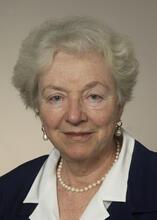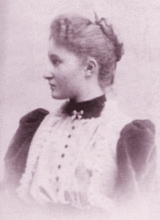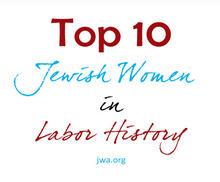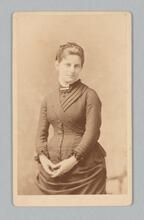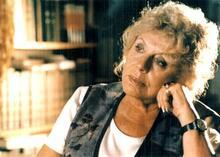Pearl Bernstein Max
After several years of substitute teaching and volunteering for the League of Women Voters, Pearl Bernstein Max eventually became coordinator of their municipal affairs committee. She also worked with the Women’s City Club of New York and the Citizens Budget Commission and wrote a series of articles for the Sunday World explaining the city’s budget to the public. This work brought her to the attention of Mayor Fiorello LaGuardia, who appointed her in 1938 as the first administrative director of the city’s Board of Higher Education. In that role, she planned the administrative and financial work of fusing four colleges into one unified system and served as liaison to CUNY’s Administrative Council of College Presidents. In 1967 she became founding coordinator of CUNY’s Office of Institutional Research. She remained active in civic life until her death.
Article
An administrator and civic activist, Pearl Bernstein Max was born in New York City on September 2, 1904, the daughter of a silk manufacturer, and grew up in a predominantly Jewish neighborhood at 116th Street and Seventh Avenue. After attending Hunter College High School’s uptown annex, she won a Regents Scholarship to Barnard College, where she studied history and political science.
After a brief job with the nonpartisan Citizens Union during the mayoral campaign of 1925, she did substitute teaching and volunteer work for the New York League of Women Voters, which eventually hired her to coordinate its municipal affairs committee. For seven years, Max attended city government meetings and briefed committee members, at the same time becoming active in the Women’s City Club of New York and the citizens’ budget commission. These civic organizations helped her develop expertise on city fiscal affairs and led to her writing a series of articles on the city’s budget for the Sunday World. When Fiorello LaGuardia became mayor, the League of Women Voters and Women’s City Club recommended her to become secretary of the city’s Board of Estimate, a post LaGuardia had created. Restless in this post after four years, she became administrator of the Board of Higher Education, coordinating the affairs of the city’s four public colleges (Brooklyn, Queens, City, and Hunter College). In 1960, her role in this work led to the establishment of a chancellorship.
Max retired in 1969. Convinced that what was most wonderful about the United States was “the influence that individual citizens and individual citizen groups could have on the way in which government affairs were managed,” she remained active in civic life. Max’s husband, Louis William Max, earned a Ph.D. in psychology from Johns Hopkins and was the first Jewish member of the faculty at New York University at University Heights. He predeceased his wife by four years. Pearl Bernstein Max died in her Manhattan home on February 4, 1999, at the age of ninety-four. Their daughter, Dr. Claire Ellen Max Arons, is a physicist.
Max, Pearl Bernstein. Oral History Interview. Women’s City Club of New York, January 26, 1988.
NYTimes articles (1939–1966).
UJE.
WWIAJ (1938).
“Pearl Bernstein Max…” City University of New York website, February 9, 1999.



